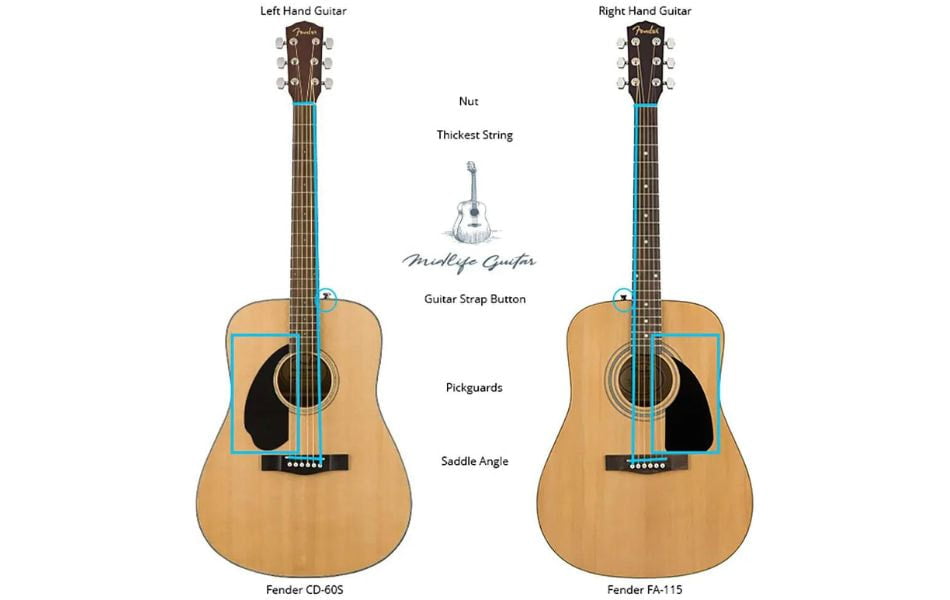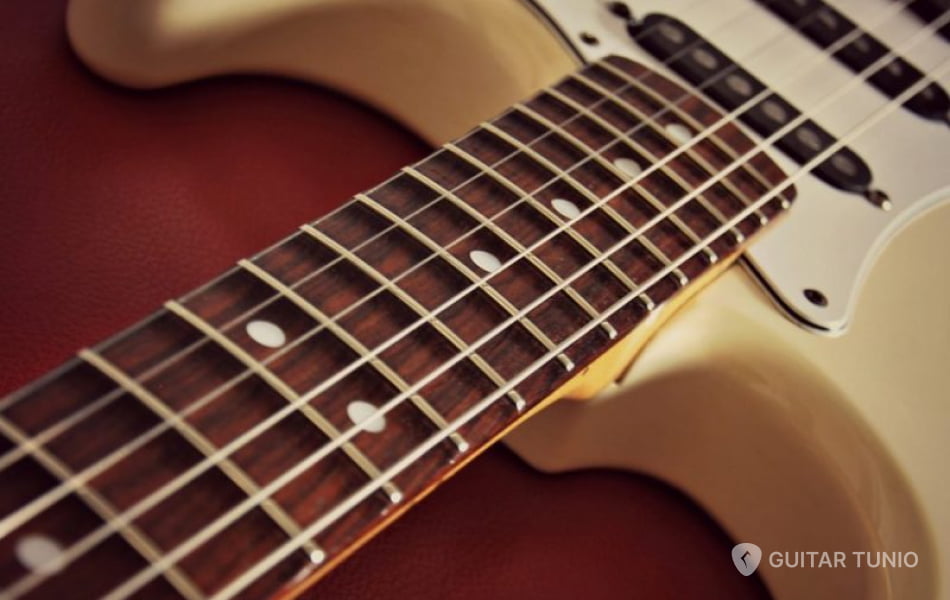Left Handed And Right Handed Guitar Differences: Reveal Secret
Left handed and right handed guitar are commonly used terms in the guitar community. However, for beginners, it may be a concept that seems unfamiliar. Are these two types of guitars similar or different? And if you're left-handed, how should you go about selecting a guitar? All these questions will be thoroughly addressed and answered in the detailed article provided below.
Differences between a left handed and right handed guitar
Strings placement
On a right-handed guitar, the strings are arranged from the lowest sounding string (the thickest) to the highest sounding string (the thinnest) in the order of E, A, D, G, B, and E. A left-handed guitar is essentially a mirrored version of this, with the strings arranged in the opposite order.
Nut and Bridge Position
The nut is a small piece located at the top end of the fingerboard, and the bridge is situated at the lower end of the guitar body. On a left-handed guitar, the nut is positioned on the left side, while the bridge is on the right side. This is opposite to a right-handed guitar where the nut is on the right and the bridge is on the left.
Pickguard Orientation
Some guitars feature a pickguard, which is a protective plate located below the strings and above the guitar body. The pickguard on a left-handed guitar is typically mirrored to match the string orientation and placement of other components.
Fretboard marks
Left handed and right handed guitar will have fretboard marks on a different side.

Guidelines for choosing the left handed guitar
Before you start playing, you need to understand that if you're a left-handed player, you can't play a right-handed guitar. You need to modify some details to be able to transform an ordinary guitar to suit you. This should be done by professionals who have technical knowledge and understanding of the guitar's structure.
String Orientation
Change the string orientation by reversing the positions of the strings. You can remove and restring the guitar so that the strings are arranged in the opposite order, from the thinnest string to the thickest. This will create a string orientation suitable for playing the guitar left-handed.
Nut and Bridge
Adjust the position of the nut and bridge on the guitar. The nut is a piece of plastic or metal located at the headstock, and the bridge is situated at the lower end of the guitar. Modify their positions to accommodate your left hand. This may require the intervention of a guitar technician to ensure accurate adjustments.
Control Layout
Adjust the placement of control knobs, switches, and volume on the guitar to suit left-handed playing. You can consider relocating the control knobs or even replacing the control set with a new one designed specifically for left-handed players.

Guitar Q&A
Left handed can play right handed guitar?
Yes, both left-handed and right-handed guitar players can play the same type of guitar. These types of guitars can be bought at any guitar store. However, a left handed guitar must modify the guitar to suit you.
Should buy a dedicated guitar for the left hand?
If possible, you can own a dedicated guitar for left-handed players. Because it's designed with left-handed players in mind, there's no tuning required when buying a regular guitar.
However, these specially designed guitars are often more expensive and difficult to find at retail guitar stores. Therefore, depending on economic conditions, you can choose to buy this type of guitar or not.
In conclusion, exploring the differences between left and right-handed guitar has unveiled some intriguing secrets. Whether you choose to adapt or acquire a specialized instrument, understanding the disparities between left handed and right handed guitar is essential in unlocking your musical potential. Embrace the secret, embrace your dominant hand, and embark on a guitar journey that is uniquely yours.
In addition, you can find the best guitar tuner app to learn guitar more easily. Guitar Tunio is an excellent app for both iOS and Android. It uses the microphone and speaker in your smartphone to provide effortless cable-free guitar tuning.








